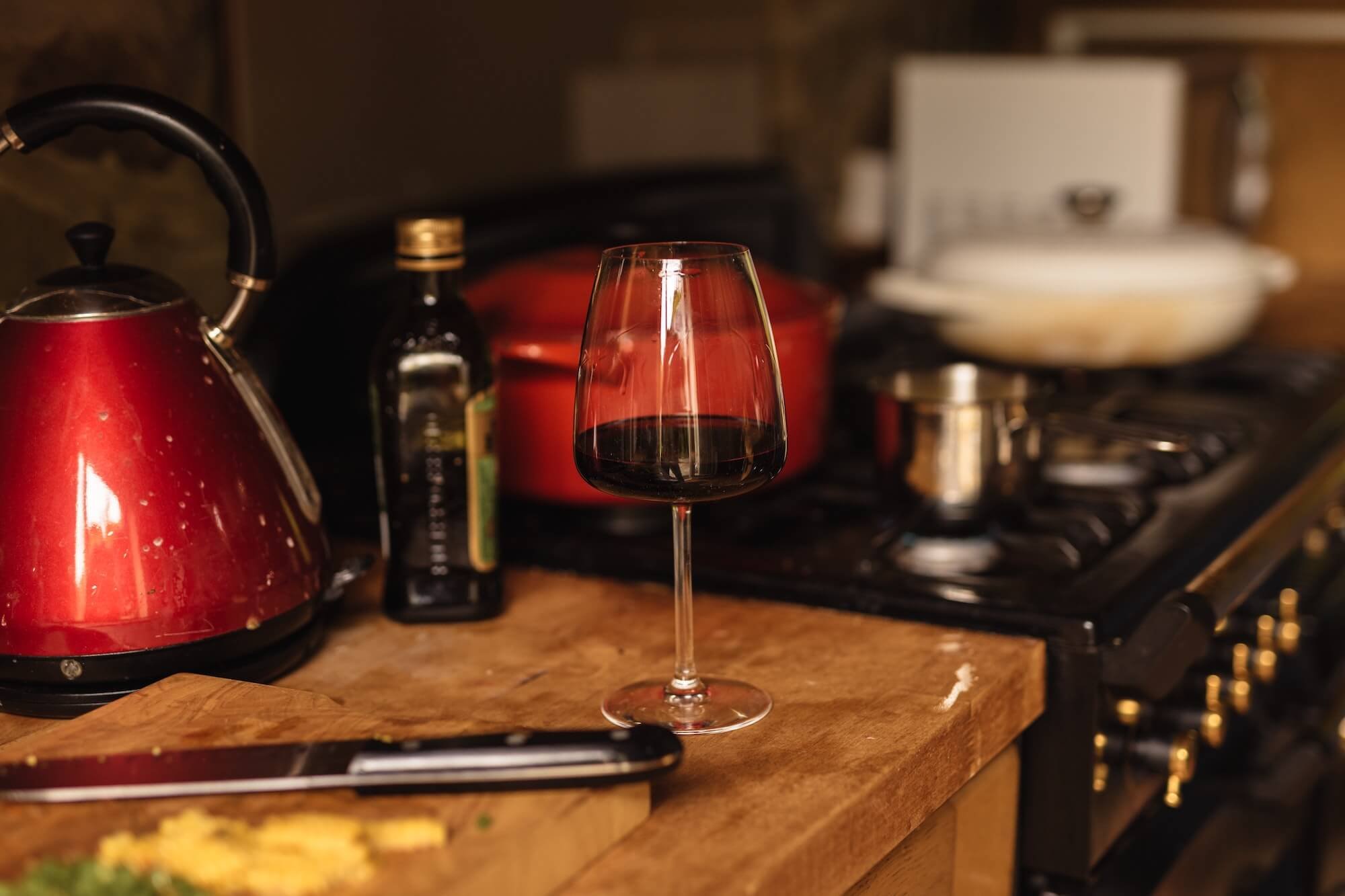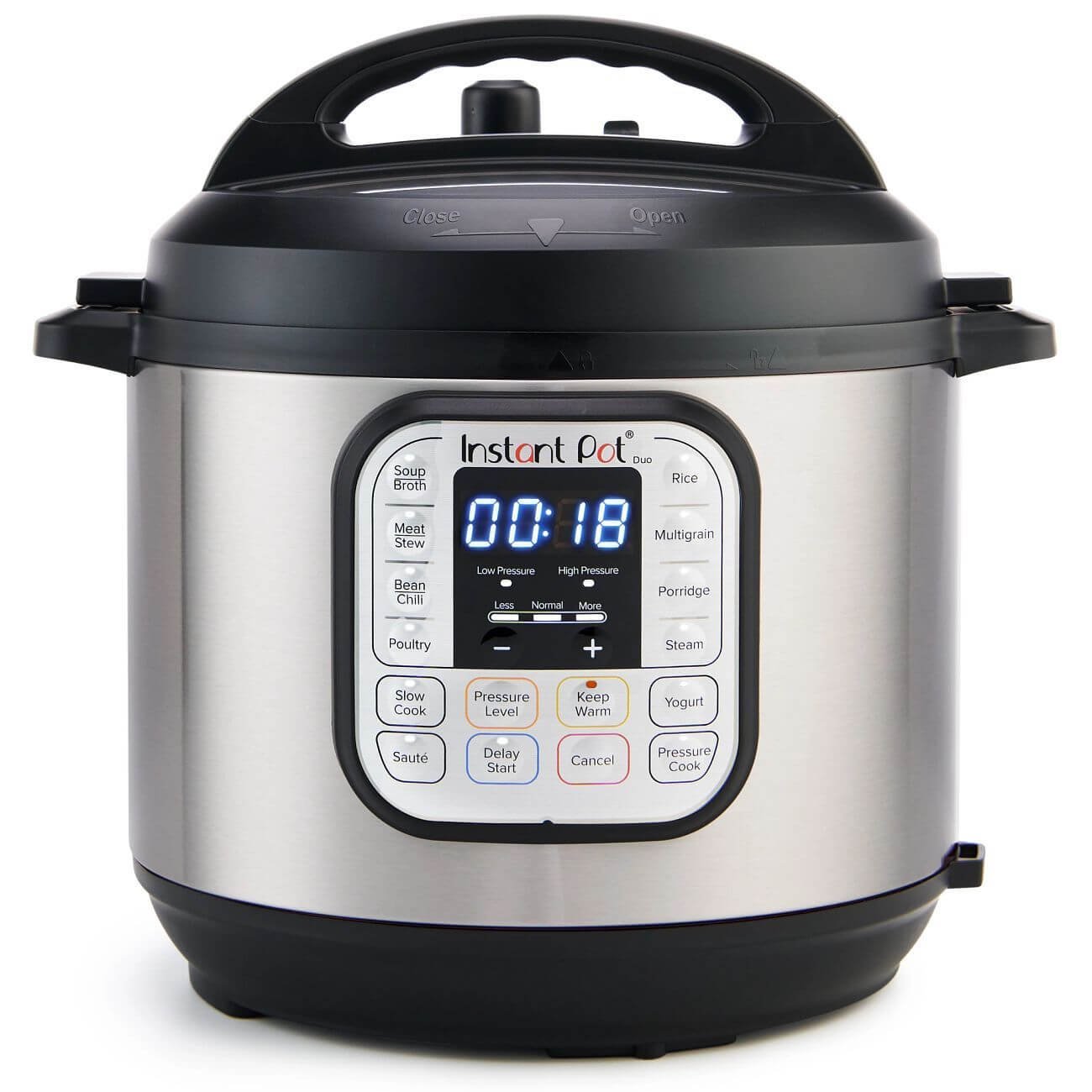How to Cook with Wine in the Instant Pot & Easy Instant Pot Beef Stew Recipe
Many of us cook with wine regularly, whether we are adding a splash of white wine at the start of a risotto or pouring a whole bottle of red into a succulent coq au vin. But lately, more and more people are forgoing the stove in favor of a certain kitchen appliance that promises to cook our favorite stews and braises faster and better than before. That appliance is, of course, the Instant Pot and its many competitors in the electric pressure cooker space. If you have recently started using an Instant Pot, you may be wondering if you can adapt your favorite wine-based recipes to this method of cooking. And if so, how is it different than cooking with wine on the stove?
In fact, you should be cooking with wine in your Instant Pot. Pressure cookers like the Instant Pot need liquid to function and wine - along with water and broth - is one of the liquids that works best. But there are some important differences between stovetop cooking and cooking in an electric pressure cooker that you will need to keep in mind.
What is the Instant Pot & How Do They Work?
Electric pressure cookers, led by the ubiquitous Instant Pot, burst onto the scene in 2010 and continue to grow more popular every year. With enhanced safety features and multiple, easy-to-use settings, the current generation of electric pressure cookers allow home cooks to create succulent soups, stews, and braises in a fraction of the time that these dishes would take on the stove - and without the danger of explosions that plagued earlier generations of pressure cookers.
But how do these electric pressure cookers work and why can they cook food faster than the stovetop? This is about to get very scientific, so bear with me. When cooking food in liquid on the stove, the maximum temperature that the liquid can reach is the boiling point of water, or 212ºF. When liquid boils, it turns to steam and that steam evaporates - even from a closed pot because a covered pot is not entirely airtight. That’s why, for example, when our pasta water boils, we see the steam escaping from underneath the pot lid.
A pressure cooker works differently, however, because it is a sealed environment from which steam cannot escape. The steam generated inside a pressure cooker, therefore, builds up and - having nowhere to go - creates pressure. This pressure causes the temperature inside the cooker to rise over the boiling point, up to around 240ºF. Thus, foods inside the pressure cooker can get hotter and cook quicker - up to 60% quicker - than on the stove.
So, for pressure cooking to work, you must have steam. Thus, you must start the cooking process with sufficient liquid to evaporate and create this steam. As a result, nearly all Instant Pot recipes call for at least a cup of a thin liquid, such as water, wine or broth. If you do not have sufficient liquid in your dish, your appliance will not build up sufficient pressure to cook the food. (And note that some liquids, such as dairy, do not work for various reasons.)
On the flip side, because the liquid cannot escape once it has evaporated—as steam does when cooking on the stovetop—most pressure cooker recipes call for less liquid than similar recipes for the stovetop. If you add too much liquid to a pressure cooker recipe, it will end up thin, watery, and not as flavorful. In other words, you need liquid to cook foods under pressure, but only as much liquid as you want in your final dish. This is true whether the cooking liquid is water, broth or wine.
To summarize, the Instant Pot is ideal for cooking many of our favorite wine-based dishes, like coq au vin or beef bourguignon, because the combination of heat and pressure tenderizes tough cuts of meat and creates rich, long-simmered flavor in half the time it would take on the stove. But to achieve that great flavor, you have to use less wine - often quite a bit less - than you would for the same recipe cooked on the stove.
Cooking with Wine
Okay, so cooking with wine in the Instant Pot works well, but does it matter which wine we choose? Of course, it does. When cooking with wine in any situation, you want to strike a balance between economy and quality. Certainly, no one wants to pour an expensive, nuanced bottle into a stew where subtle flavors can get lost or overshadowed. But at the same time, we have all heard the advice: “don’t cook with a wine you wouldn’t drink.” And anything labeled “cooking wine” should be avoided at all costs.
The calculus is a bit different when cooking with wine in the Instant Pot because there is a good chance that your recipe will only call for a cup or two of wine, leaving the rest of the bottle for drinking. So, when cooking with wine in the Instant Pot, the distinction between the wine you cook with and the wine you drink becomes less important. Cook with some of the bottle and drink the rest!
One other small note: avoid cooking with heavily tannic reds in the Instant Pot. The tannins will become more concentrated in the heat and pressure and the final dish could end up tasting unpleasantly astringent. A fruitier red wine, such as a Merlot or Zinfandel, will work best. And if you are concerned that the alcohol will not “cook off” or evaporate in the Instant Pot, you are correct. If that is a concern, add the wine when using the Sauté function and allow the liquid to boil with the lid off for a minute or two before closing the lid and using the pressure cook function.
Ready to start cooking with wine in the Instant Pot? Here is a recipe for a classic French-inspired beef stew made with red wine designed especially for the Instant Pot. Note that this recipe calls for only 1 1/2 cups of wine, leaving you the rest of the bottle to enjoy with your meal.
Instant Pot Beef Stew
2 1/2 pounds boneless beef chuck, cut into 2-inch cubes
1 1/2 teaspoons kosher salt
1 teaspoon freshly ground black pepper
2 to 3 tablespoons extra-virgin olive oil
1 yellow onion, halved and sliced
1 leek, white and light green parts only, sliced
1 tablespoon tomato paste
3 cloves garlic, minced
4 carrots, peeled and cut into 2-inch chunks
1 1/2 cups fruity red wine
1 bay leaf
3 to 4 sprigs of thyme
3 to 4 sprigs of flat-leaf parsley
1 tablespoon corn starch
1 cup frozen peas
1 cup frozen pearl onions
1 tablespoon red wine vinegar
1. Pat the pieces of beef dry using paper towels and season them with 1 teaspoon of the salt and 1/2 teaspoon of pepper. Set aside.
2. Add the olive oil to the inner pot of the Instant Pot and select the “Sauté” function. When the oil is shimmering, after about two minutes, add as many pieces of beef as will fit in a single layer without crowding. Working in batches, brown the meat on both sides, 2 to 3 minutes per side, and as they brown, transfer the pieces of meat to a plate. Repeat until all the meat is browned. If the pot begins to look dry, add more oil, one tablespoon at a time. Set aside the browned beef.
3. Add the onion and leek to the Instant Pot and season them with the remaining salt and pepper. Cook, stirring, until the vegetables have softened, about 8 minutes. Add the tomato paste and garlic and sauté an additional minute until fragrant. Press Cancel to turn off the Sauté function.
4. Return the beef and any accumulated juices to the pot. Add the carrots, wine, and bay leaf. Tie the thyme and parsley together with twine and add the bundle to the pot.
5. Close the lid and make sure the pressure release valve is closed. Select the Manual or Pressure Cook setting and set the cooking time to 25 minutes at high pressure. When the cooking program finishes, let the pressure release naturally for at least 15 minutes and release the remaining pressure manually. Press Cancel to turn off the Keep Warm function.
6. Remove the bay leaf and bundle of herbs with a slotted spoon and discard. Select the Sauté function. In a small bowl, whisk together the cornstarch and one tablespoon of cold water. Add the cornstarch slurry to the stew (to thicken it) and stir to combine. Add the peas and pearl onions. Simmer the stew until the frozen vegetables are heated through and the sauce slightly thickened, about 5 minutes.
7. Add the red wine vinegar and stir to combine. Taste and adjust seasoning, adding more salt and pepper as needed. Serve warm over buttered noodles or mashed potatoes.



